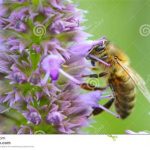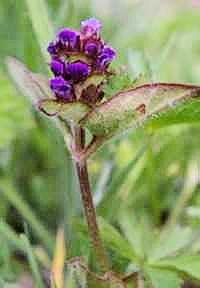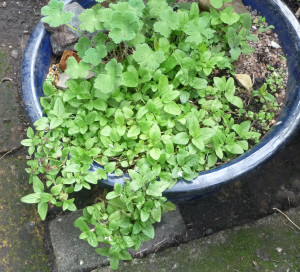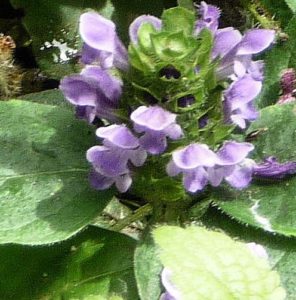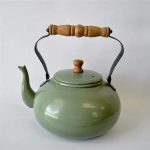SELF-HEAL (Prunella vulgaris)
Europe, Asia
A perennial wildflower of fields, meadows, roadsides & lawns, Self-heal is a plant of the woodland edge. It is a member of the mint family, with lance-shaped leaves growing in pairs on square stems. It likes sun but will tolerate semi-shade.
From June/July to October, small VIOLET-BLUE flowers appear on club-like spikes at the tops of the stems. These are much visited by pollinators.
Prunella is a low-growing plant. It can grow to 30cm high, but in lawns is usually kept to the height of the mown grass. In gardens it can be smothered by taller plants.
Bees’ Favourite
Self-heal’s persistent root system can make it unwelcome in lawns, except by visiting honeybees & other insects. One no-more mowing piece on the internet included a replacement lawn of nothing BUT Self-heal.. This would definitely be a Bees’ Favourite lawn.
“Selfheal is one of many wildflowers that are part of the Royal Horticultural Society (RHS) Perfect for Pollinators list; its rich nectar attracts bumblebees especially, as well as butterflies and other insects. So by growing selfheal in your garden, you can help promote bio diversity and support the eco-system.”
Selfheal (Prunella Vulgaris) Turf Online Knowledge Base
Taken to North America by early settlers, it is known there as ‘Woundwort’. An olive green dye is obtained from the stems and flowers of this edible wildflower. www.ediblewildfood.com/self-heal.aspx
 How to Grow
How to Grow
Self-heal likes moist soil & sunshine, & will suffer if left to dry out. It does well in shade. As it is a member of the mint family, care should be taken to plant Prunella either in a container or somewhere it will not take over the garden.
Mature plants reach about 1 to 2 feet high (31-61 cm.), at which time they will fall over & attach new roots to the ground. Therefore, you’ll want to make sure your pot is not situated flush with the ground. To prevent reseeding, trim back prunella plants after blooming has ceased.
Regular deadheading also maintains the plant’s overall appearance & encourages additional blooming. Once the growing season is complete, prune the plant back to ground level. Note: If harvesting prunella plants for medicinal use, cut the flowering tops & dry them upside down in small bunches. Store these in a cool, dry, & dark location until ready to use.
Gardening Know How: Growing Prunella: Tips For Growing The Common Self Heal Plant https://www.gardeningknowhow.com/edible/herbs/self-heal/self-heal-prunella-vulgaris-plant.htm
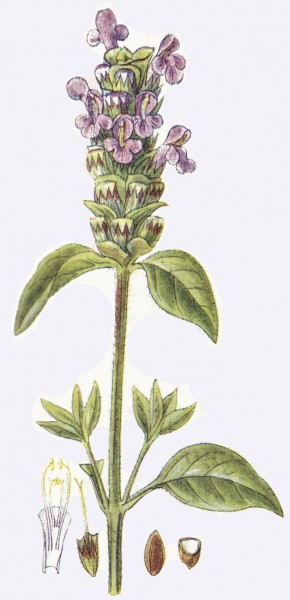
Magical Uses
‘Self Heal can be used to strengthen healing magic in general, as part of an incense, wash, anointing oil or strewing herb. If you are going to use it in this particular context, an infused oil can be used to anoint candles used to perform candle magic. Dry the flowers and infuse in sweet almond oil or any other vegetable or seed oil. Empower under a waxing or full moon, and store in a dark bottle � I’d probably favour blue or green glass if you can get hold of it.’
Folklore
‘Apparently Self Heal used to be gathered by the druids in much the same way as Vervain. It was to be picked at night during the dark phase of the moon, preferably when the Dog Star was rising, and dug up with the druid’s sickle before being held up in the left hand. After this, thanks should be said and the plant separated for drying into flowers, leaves and stems. Rather complicated but given just how many uses this herb has, perhaps well deserved!’
Ali English, The Eldrum Tree, https://eldrum.co.uk/
Medicinal and Herbal
Gerard praised the properties of Self-heal, as did Culpeper : “The juice used with oil of roses to annoint the temples and forehead is very effectual to remove the headache, and the same mixed with honey of roses cleaneth and healeth ulcers in the mouth and throat.” Maud Grieve, A Modern Herbal, 1931
John Gerard (1545-1612) wrote ‘It serveth for the same that Bugle doth, and in the world there are not two better wounde herbes as hath often been prooved.’ Self-heal contains Vitamin A, B, C, K, flavonoids, and rutin.
“Prunella vulgaris has a long history of use in traditional medicine. It was first mentioned in Chinese medical literature during the Han dynasty (206BC-AD23), mainly for complaints associated with disturbed liver energy. European herbalists have always regarded it primarily as a wound herb”. .Demi Bown, RHS Encyclopedia of Herbs and Their Uses
Botanical painting by J.N. Fitch
British Wild Flowers in Their Favourite Haunts, A R Horwood, The Gresham Publishing Company, London 1919
Self-Heal Tea
“Self-heal also has antiviral properties and, taken internally as a tea or tincture can help with throat infections, flu and fever. It’s been shown to hinder the ability of some viruses (including the cold sore virus) to replicate” .James Wong, Grow Your Own Drugs
How to make Self-Heal Tea
1. Place 1 to 2 teaspoons of dried self-heal leaves into a cup of hot water
2. Steep the tea for an hour
3. Drink two or three cups of self-heal tea per day
Invasive
P. vulgaris, commonly known as self-heal, is a herbaceous perennial considered to be native to Europe, Eurasia and America but now with a large geographical range across all continents. It was introduced to many countries (and islands) in the 1800s and since then has been recorded as invasive on many Pacific islands, as well as New Zealand (PIER, 2016). Along with other nonnative plants, it is thought to be threatening habitats and native plants on the Hawaiian Islands. In its native range it can be invasive in lawns and is often considered a weed, although in some places it has been deliberately grown as an ornamental.
CABI Invasive Species Compendium, https://www.cabi.org/isc/datasheet/116556#tosummaryOfInvasiveness
Other names: All-heal, Blue Curls, Blue Lucy, Brownwort, Brunella, Bumble-bees, Caravaun Bog, Carpenter Grass, Carpenter’s Herb, Consolida Minor, Dragonhead, Fly Flowers, Heal-all, Heart of the Earth, Herb, Herb Carpenter, Hercules, Hercules’ All-heal, Hock heal, Hook-Heal (the plant was largely used by the old herbalists for the healing of wounds inflicted by sickles, scythes and other sharp instruments), London Bottles, Panay, Pick Pocket, Pimpernel, Prince’s Feather, Proud Carpenter, Prunella weed, Sickle-heal, Sicklewort, Slough Heal, Square Stem, Thimble Flower, Touch and Heal, Wild Sage, Wound root, Woundwort, Xiakucao.




